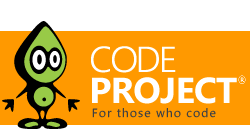Everything / ADO.NET
ADO.NET
ADO.NET
Great Reads
by Suresh Dasari's
Auto Generate Code (CRUD) for 3 Layered architecture (Entity,
by KRucker
A description of how how to convert a .
by John Kenedy S.Kom
This project enables developers to create a setup package that automatically installs MSDE and attaches database
Latest Articles
by Suresh Dasari's
Auto Generate Code (CRUD) for 3 Layered architecture (Entity,
by KRucker
A description of how how to convert a .
by John Kenedy S.Kom
This project enables developers to create a setup package that automatically installs MSDE and attaches database
All Articles
by JasonShort
Here are 10 things to make your desktop database apps better
by Arun Ramachandran India
ADO.
by jgauffin
The library is a complete ADO.
by jgauffin
This post will teach you everything from making your ADO.
by Manjuke Fernando
Always encrypted feature in SQL Server 2016
by Bipin Radhakrishnan
Introduction We use Asp grid view to display various information and we may have come across multiple scenarios where we
by Sebastian Solnica
In this post,
by JasonShort
Plugins are used in data applications to support more than one provider from a single codebase.
by Rui Jarimba
This is the first of a two part series about how to perform bulk inserts in your .
by Ben Kotvis
Complex queries with Repository Pattern and the Entity Framework.
by Mohammad Elsheimy
Give the user the flexibility to design his sheet,
by Leom Burke
A look at unit testing data access when using Entity Framework code first
by Gil Fink
One of the important tools in your tool arsenal when you develop with an ORM tool is a profiler.
by Rui Jarimba
A simple Entity Framework T4 template that generates GetHashCode() method
by User 6619207
Entity Framework Code First and WCF Data Services
by Rui Jarimba
Extension methods for ObjectContext and DbContent to get the mapped table name from an entity
by Martin Jarvis
Experiments with ADO.
by JasonShort
Exposing OData from an Entity Framework Model
by Tharaka MTR
Generate insert statements from a specific table data using SQL Server
by evry1falls
How to implement Google.
by Rui Inacio
To bulk insert efficiently,
by atverma
Criteria behind choosing IDisposable,
by Libish Varghese Jacob
Configuring and using Entity Framework 4.
by raju melveetilpurayil
Explaining how to store,
by Morshed Anwar
Implementing Repository Pattern with EF4 POCO support.
by Sibeesh Passion
How to load data from database using Web API
by Debopam Pal
Using Microsoft.
by Gil Fink
The post shows how to combine Table Per Hierarchy and Entity Splitting methods
by JasonShort
ADO.
by JasonShort
A high level overview of the ADO.
by Mohammad Elsheimy
Programmatically Enumerating,
by Gil Fink
This post will introduce the select N+1 pitfall and explain how to avoid it in Entity Framework.
by Sam Meacham
So what’s wrong with EF’s TPT inheritance? The SQL that EF generates.
by dibley1973
The stored procedure framework now supports dynamic fields within multiple recordsets
by outcoldman
TSQL: Passing array/
by jgauffin
How to create a Unit Of Work implementation for ADO.
by Sander Rossel
Using C# to get data in- and out of your (relational) database
by Sander Rossel
Need some flexible in-memory data cache? DataSets might be what you're looking for.
by Sky Sanders
A strategy for implementing maintaining separation of concerns and implementation hiding.
by Mohammad Elsheimy
Binary Large Objects (BLOBs) are pieces of data that have -usually- exceptionally large size (such as pictures or audio tracks).

